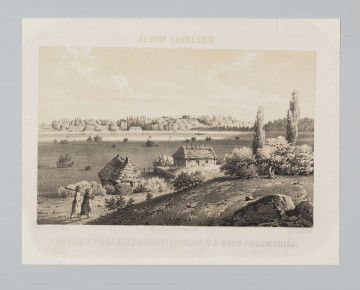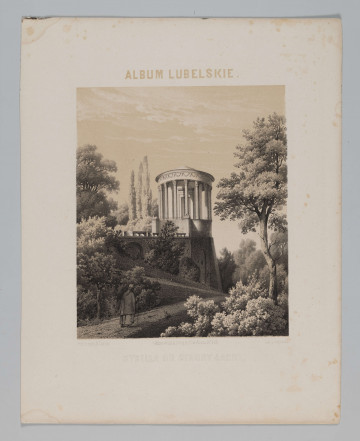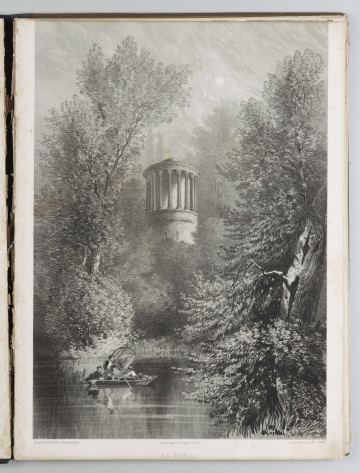
View of New Alexandria (Puławy) from the Puławy Mountain
1857
National Museum in Lublin
Part of the collection: Lubliniana. Painting views of Lublin and the Lublin Region
The Sybil Temple was erected in 1798-1801 according to the design of Chrystian Piotr Aigner as one of the park buildings for Duchess Izabela Czartoryska. This small, two-storey building housed Polish and foreign memorabilia collected by the duchess (foreign objects were moved to the Gothic House in 1809). The impulse to create the collection of Polish antiquities in Puławy came in 1793. The Second Partition of Poland was a tragedy for the country and nation. At the end of her life, the creator of the collection wrote: “In the year 1793 Poland died! The circumstances that had accumulated for several centuries slowly resulted in this deadly and terrible epoch. Neither courage nor bravery could reverse it. The greatest efforts to defend the Homeland proved unsuccessful [...]. It was then that I first thought of collecting Polish memorabilia, which I have entrusted to posterity”.
Objects depicting the history of our country from its beginnings were placed by the Duchess in the upper hall of the temple, explaining the purpose of the national collection: “This collection bears the traces of Bolesław Chrobry, Casimir the Great, Stefan Batory, Jan Zamoyski, Żółkiewski, Czarniecki, Lew Sapieha and other illustrious and valiant people. Let these memories sweeten the present times, let their age glorify them”.
The hall of the lower storey of the temple was a kind of mausoleum dedicated primarily to the memory of Prince Poniatowski. To honour the great national hero, who was particularly close to Puławy, an obelisk made of black marble was placed in the centre on which the prince's sword was hung. The monument was crowned with a bronze eagle from the times of the Duchy of Warsaw. A patriotic inscription was placed on the obelisk's pedestal: “To Prince Józef Poniatowski. He commanded the Poles. He died for his Homeland. Fallen on 19th October 1813. Hic meruit tumulum medio sibi tollere templo” (“The one who deserved a tomb erected for him in the temple”). The hall also included panoplies and trophies of great Polish commanders. The glory of the national army and upbeat content was expressed by Aleksander Linowski in his ode Invocation to the Temple at its opening:
Here we can recall what we once were.
Sobieski's helmet or the mute Jagged Sword
seem to say: “Poles, oppressed by harsh sufferings,
lift your spirits with a more glorious past!”.
Renata Bartnik
Author / creator
Dimensions
cały obiekt: height: 34,3 cm, width: 27,2 cm
Object type
graphics
Technique
lithography
Material
paper
Creation time / dating
Creation / finding place
Owner
The National Museum in Lublin
Identification number
Location / status

1857
National Museum in Lublin

1857
National Museum in Lublin

1860
National Museum in Lublin
DISCOVER this TOPIC
National Museum in Lublin
DISCOVER this PATH
Educational path